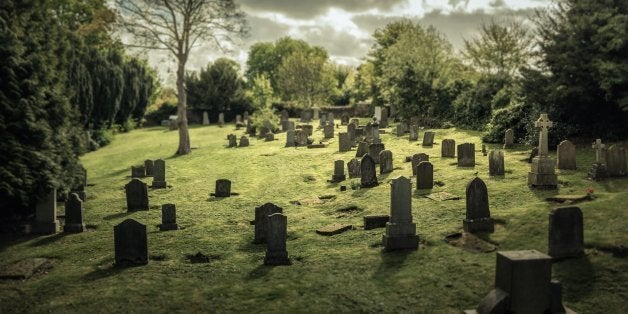
Review of The Work of the Dead: A Cultural History of Mortal Remains. By Thomas W. Laqueur. Princeton University Press. 711 pp. $39.95.
For more than two thousand years, some people, inspired perhaps by Diogenes the Cynic (ca. 412-323 B.C.E.), have made fun of burial practices and monuments. Poor, naked, inert, decomposing dead bodies, corpses without consciousness, they have insisted, are nothing. As Thomas Paine maintained, the moment that Death "obtains a conquest he loses a subject."
And yet, Thomas Laqueur, a professor of history at the University of California, Berkeley, reminds us, the dead are also something. Everywhere and across time, for those who believe in a soul, an afterlife, and God, and for heretics, infidels, agnostics and atheists, dead bodies matter: "personhood persists where it no longer resides."
In The Work of the Dead, Laqueur examines the history of death and the disposition of dead bodies in Western Europe (and the United States) from classical antiquity to the twenty-first century. Like kinship ties and incest taboos, he suggests, caring for dead bodies is a primal human feeling, "a civilizational ground zero." Again and again, in the face of skeptics and scientific studies, the "disenchanted" corpse has been "re-enchanted," albeit in different ways, and often "without an ironic shrug," he demonstrates, because virtually none of us want to accept the notion that we are bit players in the great Darwinian "drama of extinction." And because the dead are essential to our social worlds: "witnesses to lost causes, lost genius, lost pasts of which they might be made to speak."
The product of prodigious research and a subtle and sophisticated knowledge of history, anthropology, and philosophy, The Work of the Dead is as magnificent - and mindboggling - as it is monumental. Laqueur analyzes the shift from burial in churchyards (where the bodies of believers were interred in canonically prescribed ways) to cemeteries (which, in many cases, offered consecrated as well as unconsecrated ground in a park-like setting, administrated by a private company or a government agency); the tug of war over the bodies of Voltaire, David Hume, and Karl Marx; the growing criticism of pauper funerals; the rise of burial societies; the growing acceptance of cremation; and the democratic practice that emerged during the American Civil War and World War I of listing the names of the dead on monuments and plaques. And he helps us understand how and why some irresistible power of the imagination-offered up in the form of a magic we can believe in - "blinds us to the cold reality of what a corpse really is. Or rather what it is not."
Naming the dead, Laqueur emphasizes, "gives expression to a primordial feeling: the desire to remain part of the world" - and helps carry kinship across generations. Although the importance of names "extends to the deepest reaches of time," publicly-posted lists of names have grown exponentially since the nineteenth century. And they have been used for a wide array of purposes. The Church of Jesus Christ of Latter-day Saints, Laqueur indicates, has indexed and published online 3.3 billion names, with billions more in process. The Mormons' aim, of course, is to release them from darkness into a new communion through baptism. The practice came under fire in 1995, when it was discovered that the LDS had baptized Jewish victims of the Holocaust. In 2010, the Mormons promised to stop, but since then Anne Frank and Daniel Pearl, the journalist murdered by Islamic radicals, have allegedly been retroactively baptized.
Efforts to reclaim the heretofore "nameless dead" have become commonplace. The (aptly named) New York City of Department of Corrections, Laqueur reports, has established a database to facilitate searches for the 850,000 individuals buried in the paupers' field on Hart Island. The Vietnam Veterans Memorial on the Washington, D.C. Mall and the AIDS Memorial Quilt imply that the dead are where their names are (much as other monuments do for the bodies lying under tombstones), both in the aggregate and one by one. At the Vietnam Veterans Memorial, visitors make rubbings of names on paper and trace them with their fingers on the stone; the visitors leave objects - dog tags, cans of fruit cocktail (a reference to C rations), cigarettes, crutches, a motorcycle - and sometimes add messages ("Sorry Greg, I named my kid after you, and here's the beer we would have drunk").
A great deal of work, Laqueur concludes, "goes into creating 'a magic we can believe in.'" And that work continues. In the twenty-first century, some mourners pay to have the ashes of loved ones shot into space; others transform ashes into tattoo ink and inject them into their skin. With technology able to manipulate the end of life, and a movement claiming a right to die, Laqueur acknowledges that death may become "unhinged from its past." But even as dying "becomes a branch of bioengineering," we can expect nothing more - or less - than "new twists to old stories."
